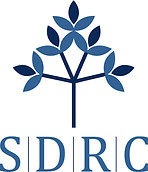What Is The Best Home Study Program For Students With Dyslexia?
- Danielle Carvalho
- Jun 14, 2021
- 3 min read
Updated: Jun 22, 2021
What A Great Topic!

Using graphic organizers is the best way to break down a project into bite sized pieces. Help the student to create them as well as “read” them.

Tip:
Using graphic organizers is the best way to break down a project into bite sized pieces. Help the student to create them as well as “read” them.
Another proven way for #dyslexics to be able to organize their thoughts and remember where the information is that they want to access is to use color coded folders in order to categorize different #subjects. You can also use this to remember certain rules for #reading, i.e., use colored overlays (plastic) that is helpful in making the reading easier to focus in on.
Numbers are easier for most dyslexics, although they do get out of sequence too sometimes. When doing #math problems, use graph paper to keep the numbers lined up properly with each square housing a number – makes it easier to “bring down” in multiplication problems.
Take turns reading aloud. Now that they are home, reading to the dog or to a younger sibling or just pretending the parent is really only five years old helps to take the edge of nerves around the reading event.
Conduct a multiple intelligence #quiz/analysis to see where the student’s strengths are and let the student select how they want to demonstrate their understanding via their various strengths. For example, if it is decided Kevan is a “#tactile” learner, meaning he likes to do things with his hands, then demonstrate his strength around building a bridge with pop cycle sticks or practice math facts by measuring in the kitchen while baking a cake. If it is #kinesthetic, then devising obstacle courses and using a stop watch to see how quickly each person can complete the run can incorporate a lot of math – or counting pennies and putting them in paper sleeves for the bank – or counting how many jumping jacks per day and graphing that.
#Visual strength would be wonderful to do “heads up” a game that demonstrates vocabulary and cognitive speed of thought processing.
That's Our Thing Here At Encinitas Learning Center, we like to speed up thinking skills by doing multiplication tables – say 3’s, only start on number 1. So that would be 1,4,7,10, etc. It makes one have to think, not just do things by rote memory. Or visualize a story by describing everything you “see” – so if I said: “The Indian crouched behind the rock waiting for the buffalo to come to the watering hole” . . . your Indian would look much different than mine, how big is the rock? what size is the water? and you can ask what we teachers call “Higher Order Thinking Skills” questions like: Why is he waiting for the buffalo to drink the water? That tells us cause and effect skills. What do you think happens next? Could there be a different ending? It’s a great teaching strategy to keep kids engaged as well, especially on subjects they don’t usually enjoy. If you have any questions or need more ideas, we’re here to help! Call us anytime, or better yet, we can do lessons on-line and get them done so you can have quality time together as a family. When all is said and done, that’s the most important thing to be remembered about this time, right?
.png)







Comments